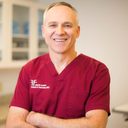Thank you for your question. You didn’t submit a photo, but ask how soon after your hair transplant can you do PRP scalp treatment. You also mentioned it’s now two weeks since your transplant, and you’ve developed a flaky scalp.





